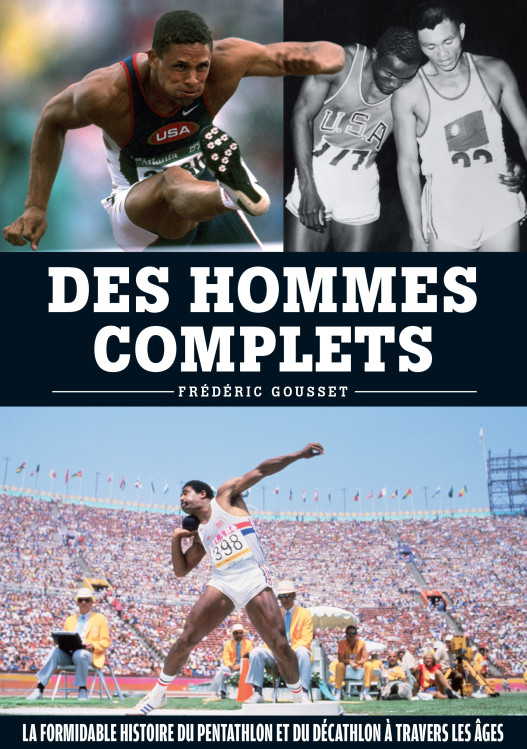The known and unknown story of pentathlon and decathlon through the centuries (6)

For almost forty years, in all the magazines and in all the books that I happened to have looked for stories about these heroes of the stadium, decathletes, I saw some pictures, few movies, many statistics, but no stories...
Frank Zarnowski, the “guru” of decathlon on the other side of Atlantic, regularly published his works, particularly well documented of a passionate Professor.
Fortunately, American people like to tell their lives, and they like heroes. So, many champions published their memories (Bob Mathias, Rafer Johnson, Bruce Jenner, Dan O’Brien, Bryan Clay... and others), others had their life written by journalists (Jim Thorpe, Glenn Morris, Daley Thompson...)
And then, the Internet came! With access to numerous documentary sources facilitated: always statistics (one can’t write a story of decathlon without figures), but also magazines like Sport Illustrated.
And a fine day at the beginning of 2012, while I had some extra time, I said to myself that I had to write the book which I would have liked to read. I needed to tell a story. A full story. From the Antiquity when pentathletes were real models for all the society, taken as models by the artists, the philosophers and men of power (pentathlon is the oldest Olympic sport after running, it was evoked in the epic of the Golden Fleece, before the Iliad!),
It would include the famous “All-around” created by the Scot immigrants in the 19th century, to the advent of actual decathlon, first distinguished by the legendary Jim Thorpe ( I had the opportunity to return on his tracks during a family journey in the US in the summer 2014 - see the article on my site : https://decapassion.wordpress.com/2014/08/16/la-route-66-du-decathlon/
Complete men is a story which begins thirteen centuries BC under the Greek sun, when combined events, already challenging, ended by the wrestling between the winners of the previous four events. The events took place one after the other during an afternoon, in front of an excited public, by a process of elimination of candidates. Only the winner counted. So, during more than a millennium, pentathlons were competed in the entire Mediterranean region under greek influence.
We had to wait the middle of 19th century to find, within Celtic games (or Caledonian games), the taste of combined events, then widely dominated by athletes of strength, who did one after the other various kind of throws, tracks and jumping events, including standing jumps.
The moderns Olympic Games of Stockholm in 1912 updated the “All-around men” in a European way, by replacing from now on the heavy throws by discus and javelin, unknown at that time in the US. Ten contests in two days, it’s the new size which was imposed and remained unchanged, in spite of the numerous criticisms which were accumulated, as long as this event remained confined to the Olympic terms. Too thankless, and not spectacular, nor gratifying. Decathlon was even compared with the Roman circus.
From the start, the American athletes were showed formidable fighters there, and count today more than 50% of the victories, podiums, and WR of modern history. Scandinavia and Finland, which are at the origin, produced champions till the beginning of 30’s. Then, it was the rising tide of Germany. But, gradually, the five continents were hit by the virus. Today, the whole planet practises decathlon. Admittedly, confidentially, due to its hard and special training. But decathlon fascinates. It also scares the specialists (sprinters, throwers, jumpers) who, for decades, have not ventured it any more seriously.
Behind the history of the records and championships, I also wrote the story of men. Their achievements, their way of the cross, what they did in their lives after the decathlon. Some made a career as actors, as doctors, as businessmen or in the Medias, some even were politicians, others sank into oblivion or decline. But all preserved inside of them the light of these moments of glory which led them towards the Olympe, as an indelible impression.
Complete men describes several dozen of them, the most famous ones, in their greatnesses as in their weaknesses.
But the story also reveals many champions underestimated or even forgotten, who have nevertheless a stage in the gallery of the heroes.
Complete men is the story of a passion which crosses time and continues today with the promises of fights to come.
Frédéric Gousset for Decathlon 2000